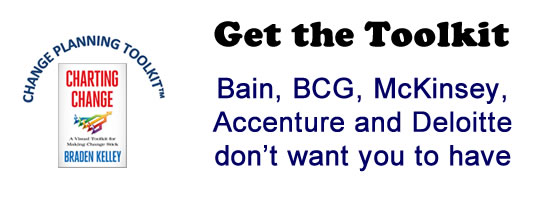How to Destroy Innovation Silos

Sick care badly needs innovation if it is to become healthcare . Yet, it’s questionable whether it can be fixed from inside. Despite the popularity of open innovation and community based, participatory innovation networks, healthcare organizations and doctors seem to shun outside ideas and collaboration and are perceived as arrogant know-it-alls, stuck in the ivory tower or healthcare city , when it comes to knowing what’s best for patients. They have a silo mindset that blocks collaboration with other stakeholders in the innovation supply chain. The challenge for most organizations is to create and engage stakeholders.
Silos are prevasive in every industry and are sapping creativity and productivity.
The problem is not unique to sick care. In fact, it is very unusual for any industry to significantly transform itself from inside. In most instances, it happens when ideas or technologies from one industry segment has sex with ideas from another industry segment.
The same is true in the ivory towers of academia. Most faculty have no clue who is their neighbor, what they are doing or areas of common or complementary interest let alone faculty interests in other buildings, campuses or the college down the street.
The 4th Industrial Revolution is happening now. It is defined as the collision of physical (sensors, robotics and AI, for example) technologies and machines with advanced information technologies (storage, softward and hardware, e.g.) with biotechnologies. The winners and losers will be those that have the skills developing the heart, mind, soul and body to resist and thrive.
There are several key steps in the process including defining the target community of interest, creating a value proposition, developing a strategic communications plan and executing it and measuring the results so you can change it.
For a start, here are ways to get out of your office, either physically or digitally:
1. Create campus incubators or accelerators that are free from the physical, cultural and organizational constraints of the mother ship.
2. Recruit for innovation and those who are connected and have robust networks outside of healthcare.
3. Create external networks and platforms to support them, driving the pressure and flow of information. Varied networks lead to more and better ideas.
4. Expand academic-healthcare organization-industry knowledge exchange.
5. Aggressively pursue vendor, supplier and patient collaboration while at the same time manage, mitigate or eliminate conflict of interest
6. Balance the conundrum of protecting but sharing data.
7. Create partnerships with researchers interested in validating and deploying digital health products and services
8. Create an organizational concierge, charged with being the one stop contact for your organization to those interested in collaborating.
9. Create a staff research directory that identifies specific areas of interest and contact information
10. Create an organizational asset map, listing your capabilities, assets and core competencies.
11. Have a eMarketing plan that integrates your resources and makes your message relevant.Can you answer yes to all these questions?
I can easily integrate my existing offline and digital marketing channels.
I have the freedom to choose best-of-breed partners.
I can easily integrate new marketing technologies into my stack.
I have a single view of my customers across channels.
I can create seamless customer experiences.
I collaborate with my marketing partners to deliver more relevant marketing.
I can accurately close the loop on every campaign to know which investments are delivering the best results, and optimize accordingly.
I can personalize marketing while respecting consumer privacy.
I am always in compliance with data privacy regulations.
I can deliver relevant, personalized marketing at scale.
12. Find a connector who knows how to build and engage a community of interest.
13. Find a high level sponsor who can provide political cover, clout and admin resources to help connect the dots.
Here are some tips on how and when to work in collaborative teams.
Aligning corporate strategy is key to success.The best performing companies are often the best aligned. But who in your company is paying attention to how well aligned your strategy is with your organization’s purpose and capabilities? In my research and consultancy with companies, I observe that, oftentimes, no individual or group is functionally responsible for overseeing the arrangement of their company from end to end. Multiple different individuals and groups are responsible for different components of the value chain that makes up their company’s design, and they are often not as joined up as they should be. All too often, individual leaders seek — indeed are incentivized — to protect and optimize their own domains, and find themselves locked in energy-sapping internal turf wars, rather than working with peers to align and improve across the entire enterprise.
12. Clusters and advanced industry segments should compare notes from time to time and hold a Technology Innovation Collision Conference. In other words, an Idea Orgy. Here isan example.
Healthcare and academic medical centers are stuck in a series of boxes. If we don’t encourage and expand interdisciplinary collaboration with those in other industries, we will make only incremental progress in an industry that needs mega-change and needs it fast. Like fingers in a glove, we can grasp the future when they work together. When you put fingers in mittens, though, you get the added benefit of warmth and closer contact.
Wait! Before you go…
Choose how you want the latest innovation content delivered to you:
- Daily — RSS Feed — Email — Twitter — Facebook — Linkedin Today
- Weekly — Email Newsletter — Free Magazine — Linkedin Group
 Arlen Meyers, MD, MBA is the President and CEO of the Society of Physician Entrepreneurs at www.sopenet.org and co-editor of Digital Health Entrepreneurship
Arlen Meyers, MD, MBA is the President and CEO of the Society of Physician Entrepreneurs at www.sopenet.org and co-editor of Digital Health Entrepreneurship
NEVER MISS ANOTHER NEWSLETTER!
LATEST BLOGS
Four ways you can ensure employees take accountability for their work
One of the most important driving factors for any successful business is a high-performing team. Having people working for you…
Read MoreWhat is digital upskilling and why is it important?
Photo by Annie Spratt on Unsplash In a world of business that never stands…
Read More


